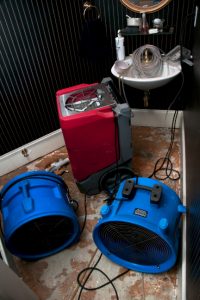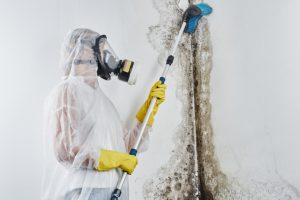Water damage restoration involves the cleanup and repair of the damage caused by water. The restoration process involves the removal of the damaged material. There are several types of damage that water can cause, such as delamination of metals and composite woods. Depending on the type of damage, it can also cause bacteria and mold growth. Here are some examples of damage caused by water: rusting and rotting of wood, corrosion of steel, and rusting of steel.

In severe cases of water damage, the restoration process requires the immediate removal of damaged property, as well as a thorough cleaning. During the cleanup, the materials that cannot be repaired or restored are removed to speed up drying. Then, a thorough drying process is performed. If there are no access to pumps, the removal of the damaged materials will be done by a professional. If the damage is not irreversible, SERVPRO can help mitigate the property’s damages by using the right equipment and techniques to clean and dry the area.

The removal of water and the repair of materials after a flood requires the assistance of a professional. The removal of standing water, however, can be challenging. The process of the removal process involves removing the damaged materials and cleaning the area. It may also require the use of special drying tools. In some cases, the restoration process requires the installation of new fixtures and furnishings. When the restoration process is complete, the homeowners can move back into the home.
After the cleanup of the affected property, the water damage restoration professionals begin to restore it to its pre-damage state. They will use N-96 respirators and protective gloves. Once the water removal process is finished, the professionals will remove standing water and replace the damaged items. Once the process is complete, the experts will dry out the property. Afterward, they will remove any mold that is present and dispose of damaged items. Once the restoration is completed, they will also repair or replace any materials that have been permanently destroyed.
Once the water cleanup process begins, the company will assess the damage. They will determine the amount of damage and their cost. If they cannot get the job done quickly, they will hire someone else to do the job. For this reason, it is best to choose a company that offers fast response and competitive prices. Once the restoration process is complete, the home can return to its original condition. In addition to hiring the right water damage restoration company, a professional can assess the extent of the damage.
After the water damage restoration process has begun, the next step is to remove damaged materials. This includes deodorization and disinfecting. Once the water removal process is finished, they will place air movers and other equipment to dry out the affected areas. If there is a lot of standing water, they will remove all the carpets and furniture. Then, they will dry the subflooring and use powerful vacuum cleaners to extract the remaining water.

Once the water is removed, the water damage restoration process must be done quickly. The process must be completed as soon as possible so that the property is not further damaged by water. During the water removal process, the property will be cleaned and dried and the flooded areas should be covered with plastic sheets to prevent mold. After the removal of the damaged items, the water mitigation process will include the cleaning and drying of the area. In some cases, it will require the replacement of sheetrock and the floors.
After the water has been removed, it is important to dry the area thoroughly to avoid mold growth. Using dehumidifiers can help to speed up the drying process. Another way to clean up the water is by using fans. These fans will allow the affected area to breathe better and will lower the humidity in the air. When this happens, the entire area may need to be completely dried. A dry room will be less likely to have mold.
A number of situations can cause water damage, including sewer backup, clogged drains, and a leaking toilet. A leaking toilet can lead to a lot of damage, and even the smell of sewage will be unpleasant. A sewage backup will cause more damage to the property than a flooded room. If the water is left untreated, it will create a mess of your property. In addition to that, if you are renting a property, you should also hire a flood insurance agent to handle the situation.